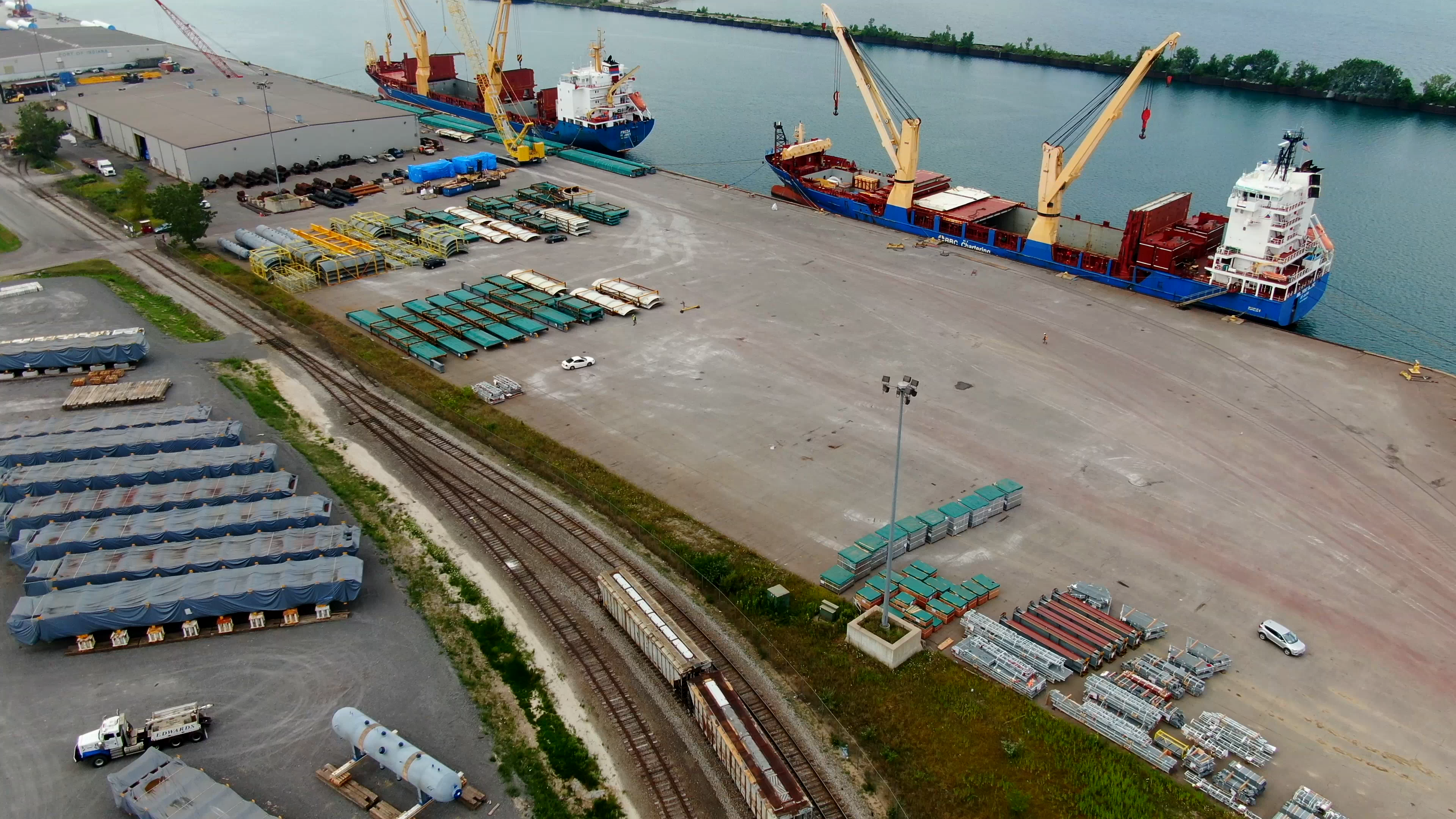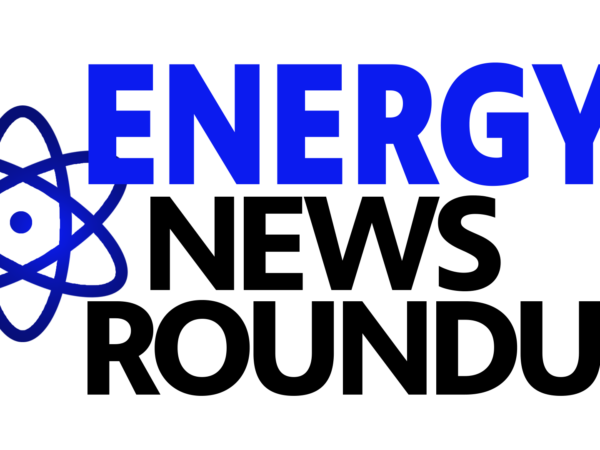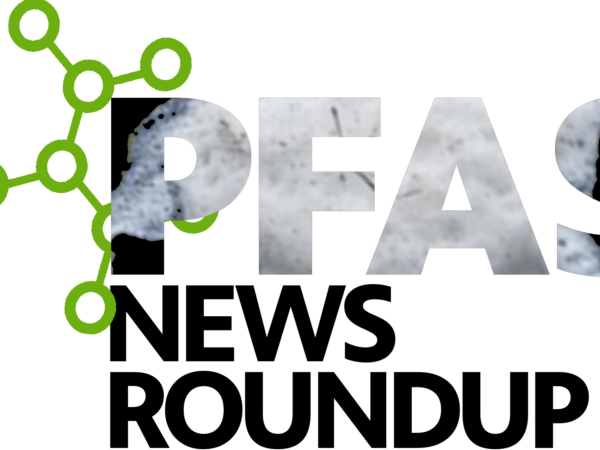
Shipping companies and ports around the world and on the Great Lakes are launching sustainability efforts to lessen their environmental impact, combat climate change, and improve their efficiency and images. With support from the Solutions Journalism Network, Great Lakes Now Contributor Kari Lydersen is reporting the four-part series “Sustainable Shipping.”
Read them here:
Are voluntary efforts enough to improve port sustainability?
At the Port of Milwaukee the wind blows toward a greener future
And watch for the “Sustainable Shipping” segment in Episode 1031 of the Great Lakes Now monthly program.
Under an ominous gray and blustery sky, forklifts dig into piles of jet-black furnace coke, dumping it into a ship tethered in the eastern channel of Burns Harbor in Northwest Indiana. Nearby are towering piles of red iron ore pellets, and just across the channel loom the smokestacks, conveyors and furnaces of a steel mill. Amid the cacophony of howling wind and thrumming machinery, a blue cannon sends a plume of water spray arcing toward the furnace coke.
This is one of the ways that the Ports of Indiana-Burns Harbor and their tenant, bulk cargo handler Metro Ports, are trying to reduce the environmental impact of a port nestled on the northwest Indiana coastline famous for creating a huge portion of the nation’s steel, and the pollution that has long been an inherent part of that enterprise.
The port is home to a number of steel operations that lease land within its footprint, bringing in massive steel coils that are sliced, stamped and otherwise altered then sent back out on ship, barge, truck or rail to be used in cars, electronics, appliances and countless other goods manufactured around the country and the world.
The port covers 600 acres, on a stretch of coast where bright gas flares pierce the sky and plumes of steam billow into it, from steel mills, an oil refinery and other heavy industry. It’s hard to picture anything “green” or “sustainable” about this apocalyptic landscape. But Ports of Indiana- Burns Harbor aims to help transform the image of northwest Indiana industry, by making changes in relatively small but meaningful ways that reduce its environmental impacts.
The port is a member of Green Marine, a multi-national organization started in 2007 in the Great Lakes region that encourages ports, their on-site tenants and ships to improve their sustainability through a voluntary certification program. Certification entails going above state and federal requirements in specific areas. There is a five-tiered scoring system with specific requirements for each tier, and Green Marine members are expected to continually improve, with their progress confirmed by independent “verifiers” every two years.

Ports of Indiana – Burns Harbor (Great Lakes Now Episode 1031)
Incremental action
Burns Harbor joined Green Marine in 2014. In 2020, the port scored 4 out of 5 in spill prevention and community impacts, 3 in environmental leadership and 2 out of 5 in both air emissions and waste management. A score of 1 means the port is complying with government regulations, and each higher level denotes more sustainability initiatives.
Along with the port itself, its tenant Metro Ports and the shipping company Fednav are Green Marine members. In 2020, Metro Ports scored 2s in air emissions and spill prevention, and 1s on the other categories. Fednav earned two 5s and two 4s on criteria specific to ships.
“A landlord port like Burns Harbor provides an excellent leadership example to its tenants,” said Randy Helland, the independent verifier who evaluated Burns Harbor for Green Marine, pointing out that two tenants have joined Green Marine as well.
The water cannon is one of Metro Ports’s achievements recognized by Green Marine. Water particles capture dust in the air and bring it to the ground, so that it does not dissipate into the lake or the surrounding area.
The port also prioritizes stormwater management as part of its sustainability efforts, in part to make sure stormwater doesn’t pick up contaminants – like dust – on the ground and wash them into Lake Michigan.
Helland said managing stormwater is “particularly critical for the Great Lakes, being the largest freshwater source in the world and a drinking water source for two countries.”
Reducing emissions
Behind the port’s administration building, port director Ryan McCoy points out another project in keeping with Green Marine membership and increased sustainability.
A steady parade of trucks rumble across an overpass leading into the port – some 350,000 trucks make this trek every year. On 6 acres below the overpass, native dunes grass waves in the wind. This will become a truck marshaling yard, neatly paved and outfitted with about 130 numbered spots where trucks can wait their turn to unload or pick up cargo in the port.
Currently, trucks drive to the specific port tenant they are visiting and line up with their engines idling as they slowly inch up in line. The marshaling yard will allow them to turn off their engines, cutting the emissions, and drivers can relax in a planned break room until they are summoned, likely via an app created for this purpose.
“It’s both reducing those carbon dioxide and diesel emissions, and making things more efficient for our customers,” said McCoy.

Ryan McCoy, port director for Ports of Indiana – Burns Harbor (Great Lakes Now Episode 1031)
Across from the truck marshaling yard, a variety of young trees grow in an incongruous stretch of grass, including black walnut, cedar and jack pine. The port planted 400 trees in an effort to reduce stormwater runoff – the trees soak up water – while also sequestering carbon dioxide and even capturing dust. The attractive jack pines were chosen specifically because dust is conveniently trapped in their thick, low branches, port operations manager Nick Harper said.
He stressed that the trees – funded by a federal grant – are meant to not only increase the green-ness of the port, but to be part of a larger effort at restoring this swath of Lake Michigan coast. That goal is especially meaningful given that right nearby is the Indiana Dunes National Park, recognized and beloved for its beautiful, fragile ecosystem – steep dunes decorated with wispy grasses, lush oak forests and pockets of wetlands, all home to a diversity of bird, animal and invertebrate species.
Finding the money, setting an example
Funding for sustainability investments is often a challenge, especially since the port is a state government body that must gain approval for spending from its board of commissioners. And since the majority of the energy-intensive and polluting activities are carried out by the port’s tenants, the port has little binding power to force them to change practices.
“We’re looking at grant opportunities differently because of Green Marine,” said McCoy. “We’ve put a lot of emphasis on green sustainable projects, and we’ve put a lot of emphasis on our tenants doing the same – we have a higher expectation of them.”
In September, people at the national park just west of the port saw a thick, reddish brown stain spreading in the narrow Burns Waterway channel and toward Lake Michigan. It turned out to be iron released from the US Steel mill, which sits directly outside the port’s boundaries. Intakes that get drinking water from the lake were suspended, and the state is investigating. US Steel has agreed to pay about $3 million for wastewater violations since 2013, according to the Times of Northwest Indiana, including for a spill of 300 pounds of toxic hexavalent chromium into that same waterway in 2017.
The steel mill is not a tenant of the port. However, its raw materials and products go in and out of the port. Though the port is not responsible for US Steel’s pollution, McCoy and Harper noted that such incidents give all local industry a bad name.
Few people live right near the port, and many in the larger area are likely unaware of how it operates. As part of their Green Marine commitments, the port has tried to create community relations. They’ve held community forums, though few residents attended.
Balancing industry and sustainability
Victoria Wittig, project coordinator of the environmental organization Save the Dunes, said she would like to see the port do more to demand the steel mills on either side of it – US Steel and Cleveland Cliffs – clean up their operations. She said her group has had little interaction with the port, but they would like to hear from port officials.
“I was very pleased to learn that the port is pursuing this Green Marine status or certification and really want the port to reach out to their neighboring facilities and ensure that they too are doing everything, everything that they can to become more sustainable,” Wittig said.
In addition to the 350,000 trucks, more than 75 ships, 450 barges, and 10,000 rail cars pass through the port each year. In addition to steel, the port serves as a way station for soybeans and grains shipped out from Midwest farms, wind turbine blades imported from Europe, and road salt and fertilizer distributed throughout the region.
The Ports of Indiana’s three ports – in Burns Harbor and two on the Ohio River – contribute an estimated $8.2 billion to the state economy. The ports also create more than 30,000 direct, indirect and induced jobs, according to the port. The port’s operations are fully funded by their own revenue, and the port pays more than $4 million in taxes to city, county and school board bodies.
The port officials as well as local watchdogs hope the port can continue to fill this economic role, while becoming more sustainable.
“We’re not saying that we don’t want industry here,” said Wittig. “We know that it’s an important part of the economy and we know that the products and services that they provide are essential to the well-being of our society. What we want to see is them stepping up to the plate and implementing the technologies that will protect not only their bottom line, but our natural resources.”
Catch more news at Great Lakes Now:
Green Marine: Are voluntary efforts enough to improve port sustainability?
Edmund Fitzgerald 2021: Attend a shipwreck memorial service in person or virtually
Featured image: Ports of Indiana – Burns Harbor (Great Lakes Now Episode 1031)



